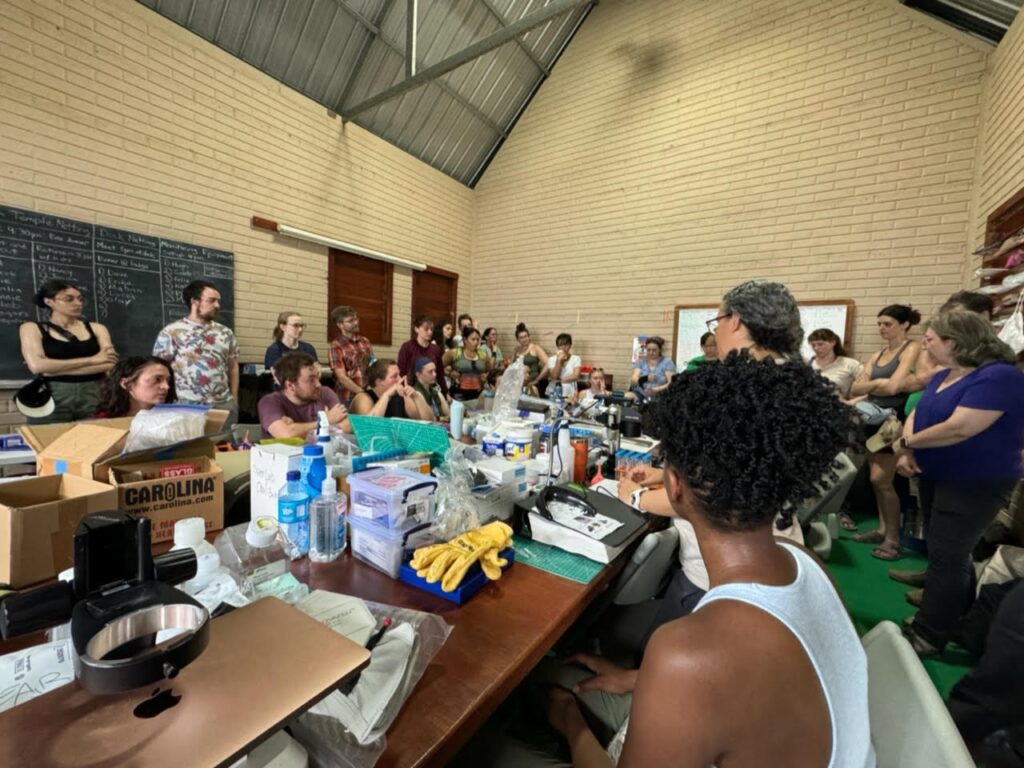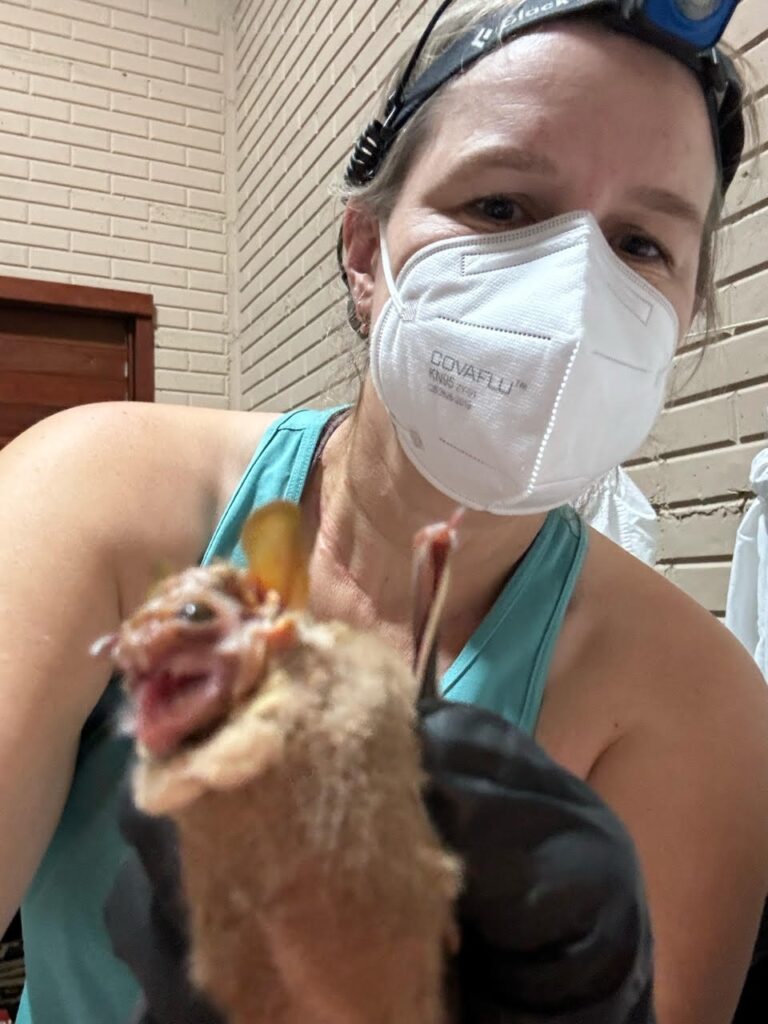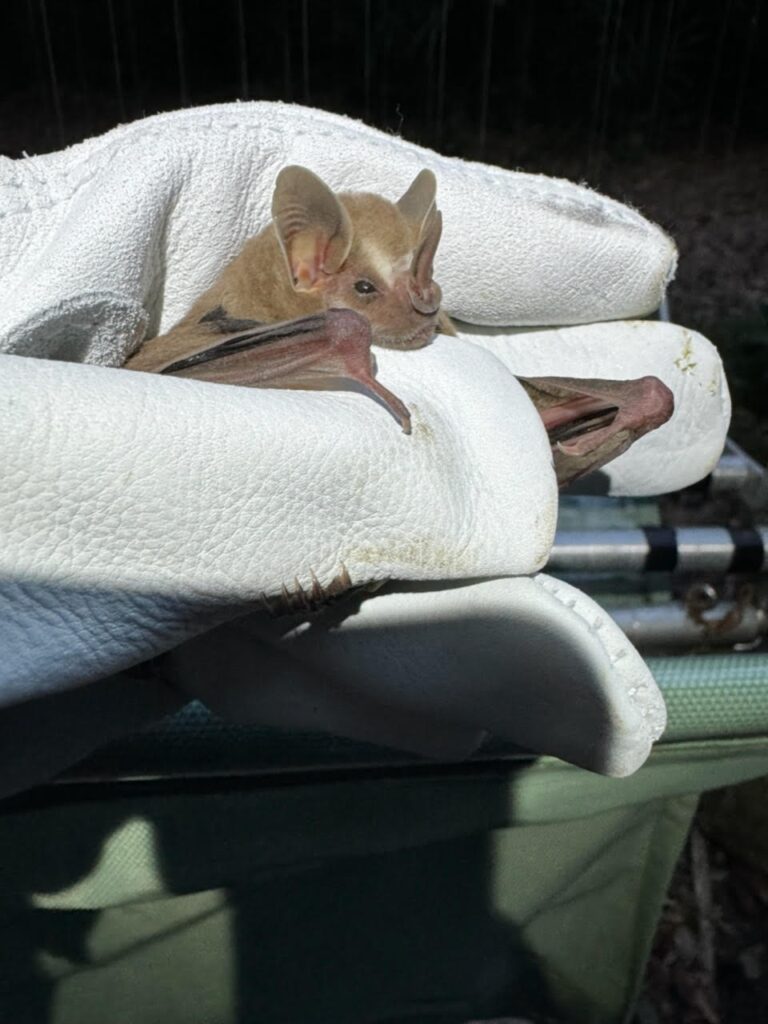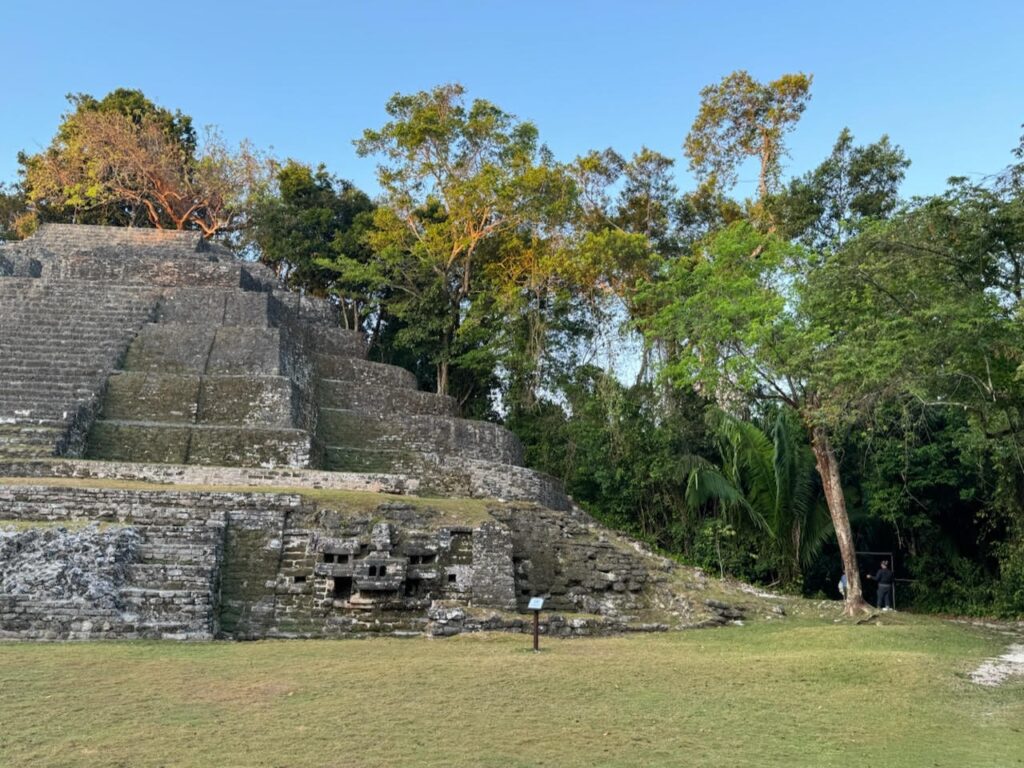
by Stephanie Kiesow-Edoh
⦁ Could you tell me a little about your research and why bats are used as a model for aging?
In my lab, we harness the diversity of mammals to identify processes that drive change in organisms during their lifetime over time. Bats are a good model for mammalian longevity because like humans, they are mammals, and many species have evolved very long lifespans. Of the 19 mammalian species that are known to live the same amount of time as humans (or longer), 18 are bats.
Importantly, unlike humans, bats are thought to not get cancer or exhibit biological deterioration with years lived. In addition, not only do bats have a long lifespan but they also have a long health span – meaning that they live long lives with a high quality of life.
Given this, scientists ask questions like: how do bats do it? What processes might bats be using to live such long, healthy lives? And how might this inform human health?
⦁ How might using bats as a model influence theories around reproductive aging, ovarian aging, and women’s health?
The ovary is the fastest aging organ in the body. This leads to many health concerns, not only in terms of fertility but also in relation to menopause, bone density, cancer, mood disorders, etc. We are interested in how bats may be used as a model to improve overall female health. What we see in bats (in contrast to what we see in humans) is that there is seemingly no decrease in reproductive health span. For example, the likelihood that bats can get pregnant builds over the first year or two and then levels off (without decreasing over time) for the rest of their lifetime. Therefore, bats do not exhibit a menopause the way women do.
⦁ You just returned from conducting fieldwork in Belize. How was this experience? What did you learn? What types of roles/duties do your students have while you are in the field? Do you plan on going back? If so, when?
Fieldwork is at the core of what we do with the lab. In a typical year, members of my lab visit Belize and Trinidad. Bats are highly diverse and only a few are in colonies. We can learn a lot about bats in the field. On a typical work day – at 4 or 5pm we will set up nets before it gets dark and monitor the nets, taking bats out of them until approximately midnight before processing tissue samples. Typically, students process samples for a few hours and then a group of us will go out early (around 4am) to collect the rest.
The Belize trip was fun in particular because we are joined by scientists from different parts of the world – on this last trip, there were 60 bat researchers who study every aspect of bat biology. It is really a great experience for students to connect with other researchers in this field. Also, any bat that is used for research is used by multiple groups – we try to minimize our impact as much as we can. Being a senior researcher now, it is very meaningful to help mentor of students on these trips not only in scientific research but also the importance of conservation.
⦁ As a professor, what is one of the most common questions you receive from students regarding this work/material?
In the Winter Quarter of 2024 I taught a new course called “Why Bats Are the True Superheroes.” During this course, I’m using bat biology as an entry point to study various topics such as: viruses and immune system function, how animals use their limbs to move around in the environment, etc. One of the most common challenges for students is that they have a hard time accepting why we know so little on various aspects of mammalian biology. This is how we help students make a transition from what is known in textbooks to the next frontier, which is uncovering the unknown.
⦁ What are some big next steps for your research?
There are so many ways forward right now – it is very exciting. The next big foci will be the bat ovarian work with Dr. Clark and CRSHE. As I’ve become older, I’ve become interested in having more of an impact on society. We understand very little about reproductive aging, yet each year 47 million women enter menopause due to decline of ovarian function. A major question in the field is how ovarian decline can be slowed or reversed. Species that do not go through ovarian decline may have something to teach us about this.
I’m also very excited about how bats accumulate less DNA damage in their cells. This question is so fundamental to cancer and aging and all of the aging-related diseases that humans get that impact quality of life.
What we have found in our research so far is that different lineages of bats can achieve mitigation of DNA damage in different ways. So it is very interesting from an evolutionary perspective and has human health implications as well.
One of the most exciting things recently is that we have been able to grow bat cells in the lab. Through bat cell culture, we can begin to study cells in the lab, and see how they respond to DNA damaging agents. These types of approaches will advance our understanding of healthy aging.



